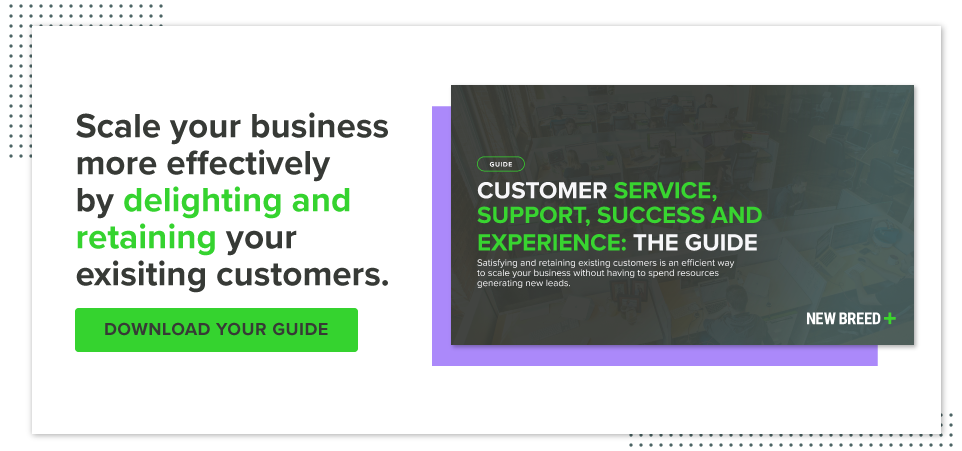How to Onboard SaaS Customers Successfully
The first 90 days of an engagement are crucial for its long-term success, and if customers don’t get successfully onboarded onto a product, they’ll almost certainly churn.
You want to build on the momentum that was generated during the sales process, and reach prospects when your product is top of mind. You want to provide ways they can start to realize the value they were promised.
Onboarding emails are an effective way to create that experience. They can be personalized and contextualized to what your new customer needs in a given moment.
Emails are also effective from the organizational lens because they can be automated based on triggers and require a low investment. So without an undue burden on your team, you can send communications that solidify your brand, build trust and provide your customers with value.
There are four types of emails you should send during the onboarding process:
The Welcome Email
If you’ve ever signed up for something, you’ve likely received an email along the lines of “Thanks for signing up.” But, a welcome email is more than an opportunity to say "hi" or, for that matter, present information the recipient already knows.
Your welcome emails should be actionable, informative and clear. While you want recipients to engage with your email by viewing or clicking on it, in reality the goal of your welcome email is to move users through the onboarding process (and get them to use your product).
Best Practices:
- If you include an introduction, make it brief
- Build momentum: Your email should reflect what you want users to do next
- Include a clear, compelling and enticing call-to-action
This example from Slack prompts the user to start exploring the product, provides them with all the info they need to sign in and offers up additional resources.
The Getting-Started Email
Your getting-started email takes the welcome email a step further. Once you’ve welcomed new customers, it’s time for them to dive into your software. The goal of this email is to move them from their inbox to the app or platform as efficiently as possible. The sooner users take action, the sooner they'll garner value from your product.
You do this by piquing recipients’ interest with education. Your getting-started email should introduce users to a feature you know people love and the benefits those people have experienced by using it.
Best Practices:
- Focus on benefits, not features
- Include an exact link; don’t make users jump through hoops to get to the feature you suggested they check out
- Use data to your advantage by not asking people to do something they’ve already completed with your software, like set up their profile
This example from LinkedIn prompts the user to start leveraging two key features of the platform: building out their profile and networking. It additionally provides download links for the mobile app to make accessing LinkedIn easier for the user.
The Milestone Email
At this point in the onboarding process, users have taken action with your software and have reached a milestone (finished their first project, scheduled their first email, created their first report, etc.) that deserves recognition. This action merits not only an award but also a conversation.
The milestone email should reinforce the value your software is delivering by speaking to the recipient’s accomplishment. In doing so you make your customers feel good about their experience and get them excited to get back into your product.
Best Practices:
- Make users feel awesome for using your product by employing upbeat, positive language
- Use micro CTAs to deepen your relationship, such as referring a friend or following on social media
Canva does a great job of instilling excitement and prompting users to share their accomplishments in this milestone email:
The Upsell Email
By now, customers are fully onboarded on your product. They’ve been using it on a regular basis and are satisfied with their experience thus far. Now is a perfect opportunity to add even more value for your customers.
While "upsell" generally holds a negative connotation, many times users welcome these emails. If executed strategically, customers truly appreciate your letting them know about something great they may have missed before.
Best Practices:
- Focus on the benefits vs. the features
- Weave an up-sell through a communication you would have sent anyway (i.e product update, shipping confirmation, etc.)
- Include personalization, so the recipient feels good about his or her relationship with you and recognizes that you're paying attention to his or her experience
For example, in this excerpt from a Grammarly weekly usage summary, after highlighting how many words they’ve helped the user check so far, they promote how even more value can be gained by upgrading to the premium version of the product. Additionally, at the bottom of the email, they summarize what products you’re currently using and what you can activate to use the product more fully.
The Takeaway
In addition to helping your customers realize value from your product, onboarding emails also benefit your company operationally.
Throughout the onboarding process, you need to have a way of tracking how far customers have progressed, whether through product usage triggers, tickets or an onboarding funnel.
By looking at what emails were sent and what emails weren’t, you can easily identify which stages of onboarding a customer has completed. This can help you ensure the process is going smoothly or raise flags when a step hasn’t been triggered.
For example, if the milestone email hasn’t been sent within a given timeframe, that can be a sign for your customer success team to do some proactive outreach to ensure the customer is seeing value from the product.
Karin Krisher
Karin is Content Lead at New Breed. She specializes in developing content strategy and copy at every point in the creation process, from persona design to final edits





